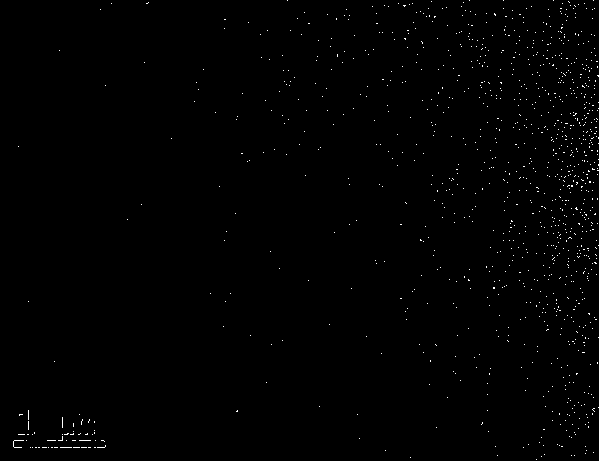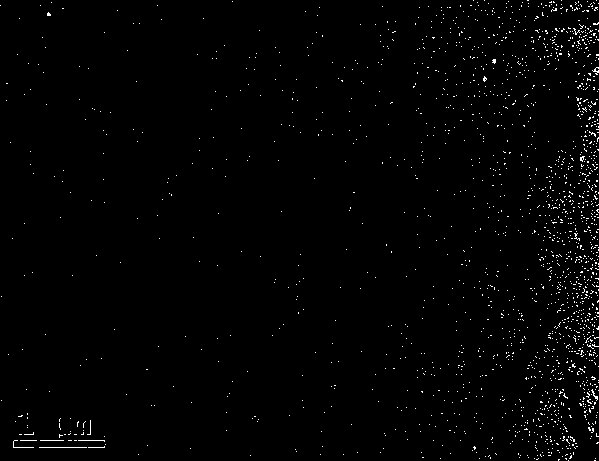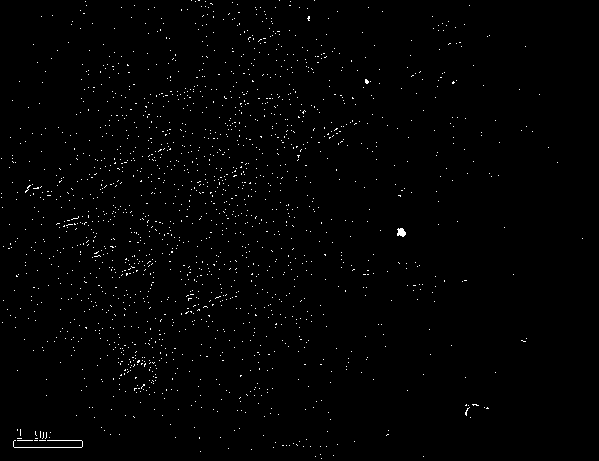Method for preparation of nano-cellulose whiskers from garlic skins
A nanocellulose and whisker technology, which is applied in fiber raw material processing, textiles and papermaking, etc., can solve the problems of time-consuming and labor-intensive, limiting the application and development of nano-cellulose whiskers with high aspect ratio, and cumbersome processes, etc. Achieve the effect of avoiding influence and harm, easy to implement, and simple process
- Summary
- Abstract
- Description
- Claims
- Application Information
AI Technical Summary
Problems solved by technology
Method used
Image
Examples
Embodiment 1
[0028] Embodiment one: Specific steps are as follows:
[0029] (1) High-pressure swelling: put 2g of garlic skin into an autoclave, add 100g of Na with a mass percentage concentration of 2wt% 2 CO 3 Aqueous solution, place the autoclave in an oven at 120°C for 120 min, and filter / wash the mixture with suction; (2) Cooking and degumming: put the swollen and suction-filtered product into a reaction vessel, add 100 g of wt% NaOH aqueous solution was reacted in an oil bath at 120 °C for 4 h, and the mixture was suction filtered / washed; (3) polysaccharide extraction: the degummed product fiber was placed in 400 mL of 2% H 2 SO 4 In the aqueous solution, stir the reaction in an oil bath at a temperature of 90 °C for 2 h, and filter / wash again; (4) Bleaching treatment: Add 400 mL of 5wt% H 2 o 2 In the solution, adjust the pH value to 11.5 with NaOH, stir the reaction in an oil bath at 45 °C for 6 h, then cool to room temperature, and use 300 mL of 1.4 wt% NaClO to acidify 2 ...
Embodiment 2
[0031] Embodiment two: Specific steps are as follows:
[0032] (1) Cooking and screening: put 4 g of garlic skin into an autoclave, add 200 g of Na 2 CO 3 Aqueous solution, place the autoclave in an oven at 120°C for 120 min, and filter / wash the mixture with suction; (2) Cooking and degumming: put the swollen and suction-filtered product into a reaction vessel, add 200 g of wt% NaOH aqueous solution was reacted in an oil bath at 120 °C for 4 h, and the mixture was suction filtered / washed; (3) polysaccharide extraction: the degummed product fiber was placed in 600 mL of 2% H 2 SO 4 In the aqueous solution, stir the reaction in an oil bath at a temperature of 90 °C for 2 h, and filter / wash again; (4) Bleaching treatment: Add 400 mL of 5wt% H 2 o 2In the solution, adjust the pH value to 11.5 with NaOH, stir the reaction in an oil bath at 45 °C for 6 h, then cool to room temperature, and use 300 mL of 1.4 wt% NaClO to acidify 2 solution to continue bleaching with CH 3 Adj...
Embodiment 3
[0034] Embodiment three: The specific steps are as follows: this embodiment is basically the same as the second embodiment, the difference is: stirring and hydrolyzing in sulfuric acid solution for 8 h.
[0035] The transmission electron micrograph of the garlic peel nanocellulose prepared by the present embodiment is as follows: image 3 As shown, it can be seen from the figure that the garlic skin nanocellulose whiskers are needle-shaped, with a diameter of 20nm~30nm and a length of 300nm~2μm.
PUM
| Property | Measurement | Unit |
|---|---|---|
| diameter | aaaaa | aaaaa |
| length | aaaaa | aaaaa |
| length | aaaaa | aaaaa |
Abstract
Description
Claims
Application Information
 Login to View More
Login to View More - R&D
- Intellectual Property
- Life Sciences
- Materials
- Tech Scout
- Unparalleled Data Quality
- Higher Quality Content
- 60% Fewer Hallucinations
Browse by: Latest US Patents, China's latest patents, Technical Efficacy Thesaurus, Application Domain, Technology Topic, Popular Technical Reports.
© 2025 PatSnap. All rights reserved.Legal|Privacy policy|Modern Slavery Act Transparency Statement|Sitemap|About US| Contact US: help@patsnap.com



